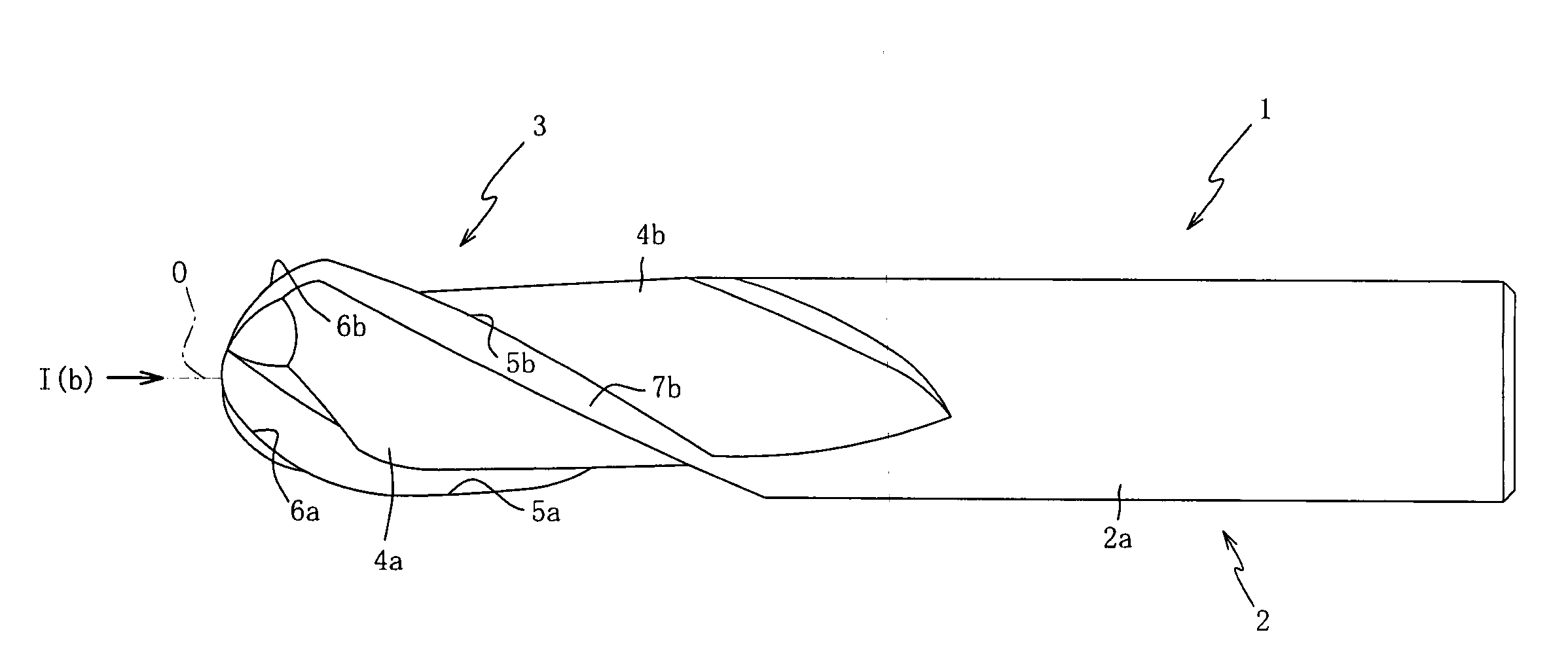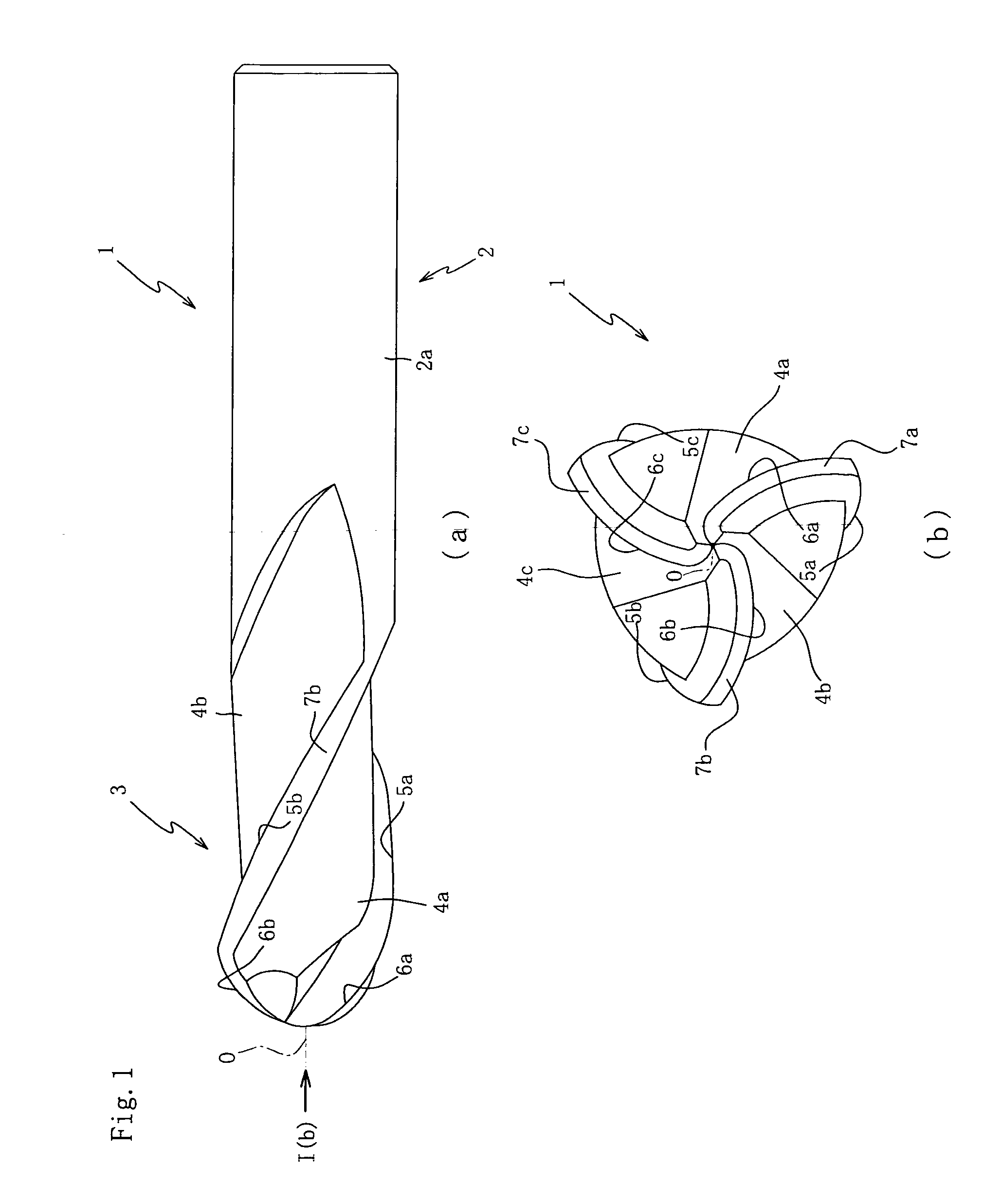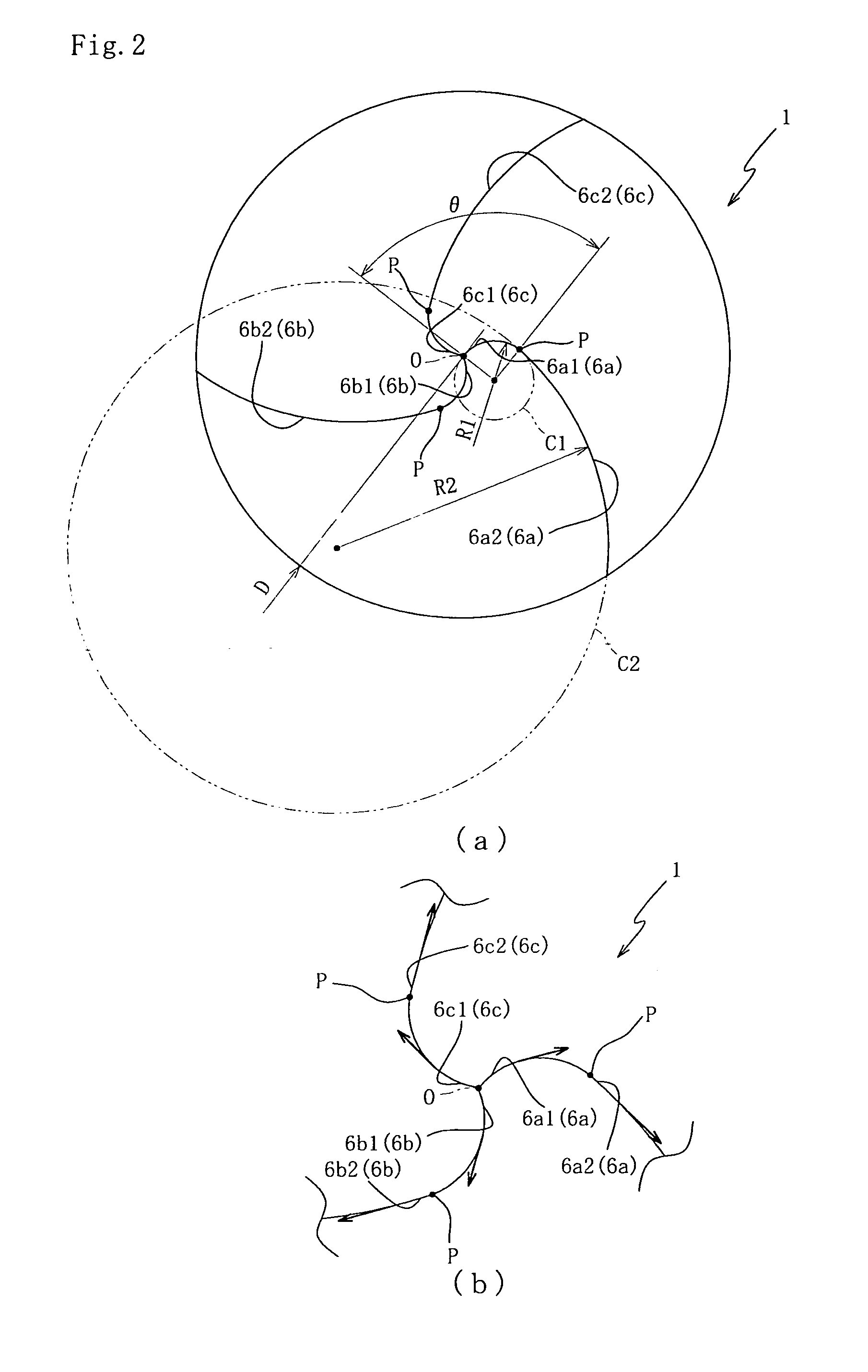Ball endmill
a ball endmill and ball end technology, applied in the field of ball endmills, can solve the problems of inability to improve cutting efficiency, inability to increase feed rate and cut depth, etc., and achieve the effect of restrainting and reducing the vibration of the ball endmill
- Summary
- Abstract
- Description
- Claims
- Application Information
AI Technical Summary
Benefits of technology
Problems solved by technology
Method used
Image
Examples
Embodiment Construction
[0026] Hereinafter, a preferred embodiment of the present invention will be described with reference to the drawings. View (a) of FIG. 1 is a front elevational view of a ball endmill 1 according to the embodiment of the invention, and view (b) of FIG. 1 is an enlarged side view showing in enlargement the ball endmill 1 as seen in a direction indicated by arrow Ib in view (a) of FIG. 1.
[0027] The ball endmill 1 is of solid type, and is a tool that is to be used principally for the purpose of performing an operation to machine a free-form surface of a die or mold. In the machining operation, a rotational force of a machine tool such as a machining center is transmitted to the ball endmill 1 via a holder (not shown) that is provided to hold a portion (a right side portion as seen in view (a) of FIG. 1) of a tool body 2 of the ball endmill 1.
[0028] The tool body 2 is constituted by cemented carbide alloy that is obtained by pressure sintering of tungsten carbide (WC) or the like. The ...
PUM
 Login to View More
Login to View More Abstract
Description
Claims
Application Information
 Login to View More
Login to View More - R&D
- Intellectual Property
- Life Sciences
- Materials
- Tech Scout
- Unparalleled Data Quality
- Higher Quality Content
- 60% Fewer Hallucinations
Browse by: Latest US Patents, China's latest patents, Technical Efficacy Thesaurus, Application Domain, Technology Topic, Popular Technical Reports.
© 2025 PatSnap. All rights reserved.Legal|Privacy policy|Modern Slavery Act Transparency Statement|Sitemap|About US| Contact US: help@patsnap.com



